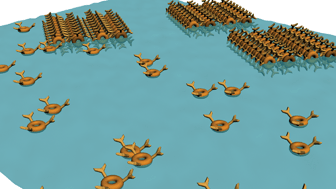Side chain assisted nanotubular self-assembly of cyclic peptides at the air–water interface†
Abstract
Langmuir monolayers of two artificial

Maintenance work is planned for Wednesday 1st May 2024 from 9:00am to 11:00am (BST).
During this time, the performance of our website may be affected - searches may run slowly and some pages may be temporarily unavailable. If this happens, please try refreshing your web browser or try waiting two to three minutes before trying again.
We apologise for any inconvenience this might cause and thank you for your patience.
* Corresponding authors
a
Department of Chemistry, Institute of Biological Interfaces, Sogang University Shin-soo, Mapo, Korea
E-mail:
kwshin@sogang.ac.kr
Fax: +82-2-701-0967
Tel: +82-2-705-8441
b Department of Physics, Sogang University Shin-soo, Mapo, Korea
c Department of Materials Science and Engineering, Gwangju Institute of Science and Technology, 1 Oryong-dong Buk-gu, Gwangju, Korea
d Department of Nanobio Materials and Electronics (WCU), Gwangju Institute of Science and Technology, 1 Oryong-dong, Buk-gu, Gwangju, Korea
e Hasylab am Desy, Notkestrasse 85, Hamburg, Germany
f Department of Nano Science and Engineering, Sejong University, Seoul, Korea
g NIST Center for Neutron Research, National Institute of Standards and Technology, 100 Bureau Dr., Gaithersburg, MD, USA
h Fachbereich Chemie—Organische Chemie, Technische Universität Kaiserlautern, Erwin-Schrödinger-Straße, Kaiserslautern, Germany
Langmuir monolayers of two artificial

 Please wait while we load your content...
Something went wrong. Try again?
Please wait while we load your content...
Something went wrong. Try again?
B. Kwak, K. Shin, S. Seok, D. Kim, F. Ahmad, K. E. Geckeler, O. H. Seeck, Y. Seo, S. K. Satija and S. Kubik, Soft Matter, 2010, 6, 4701 DOI: 10.1039/C0SM00143K
To request permission to reproduce material from this article, please go to the Copyright Clearance Center request page.
If you are an author contributing to an RSC publication, you do not need to request permission provided correct acknowledgement is given.
If you are the author of this article, you do not need to request permission to reproduce figures and diagrams provided correct acknowledgement is given. If you want to reproduce the whole article in a third-party publication (excluding your thesis/dissertation for which permission is not required) please go to the Copyright Clearance Center request page.
Read more about how to correctly acknowledge RSC content.
 Fetching data from CrossRef.
Fetching data from CrossRef.
This may take some time to load.
Loading related content
